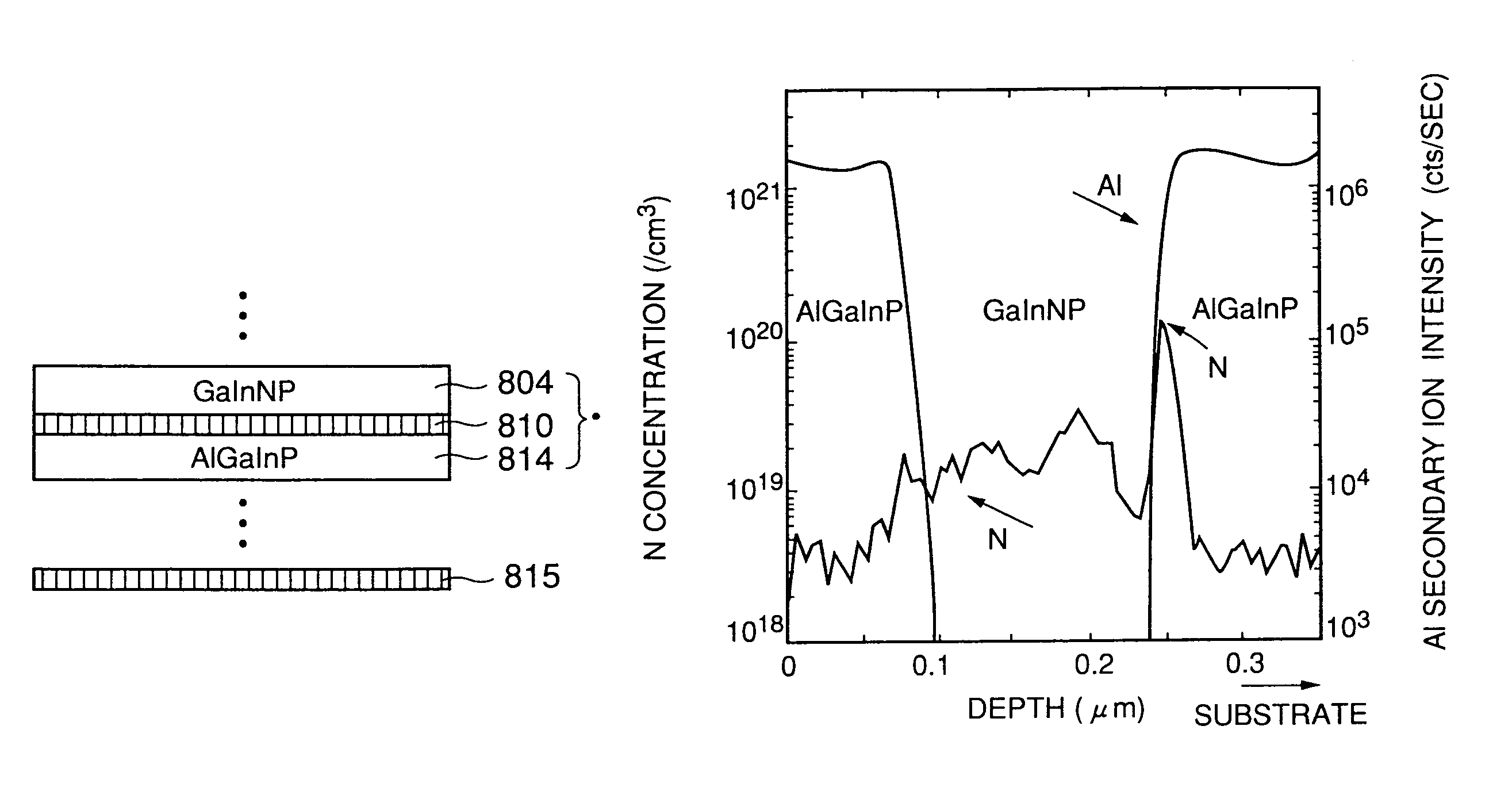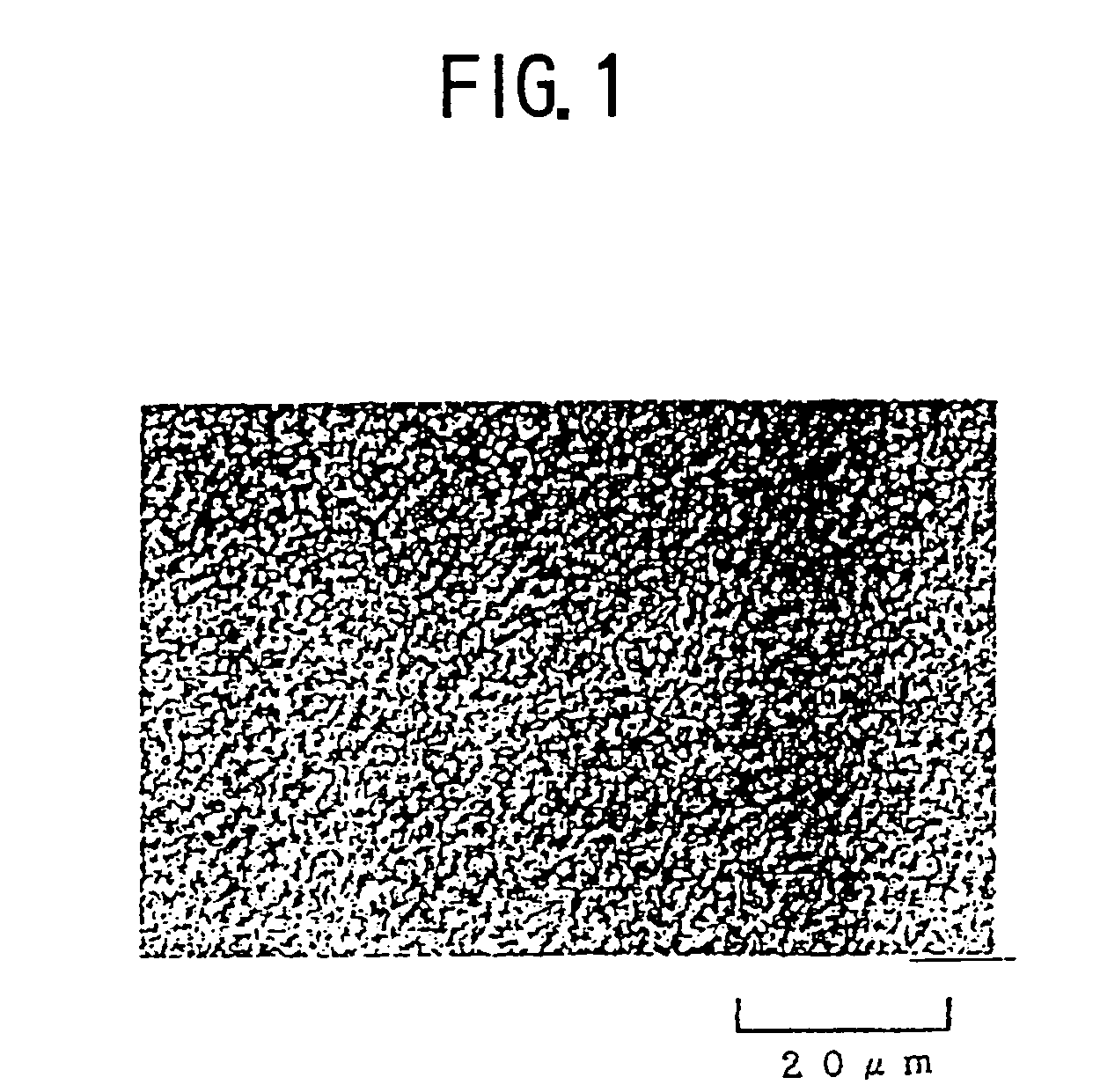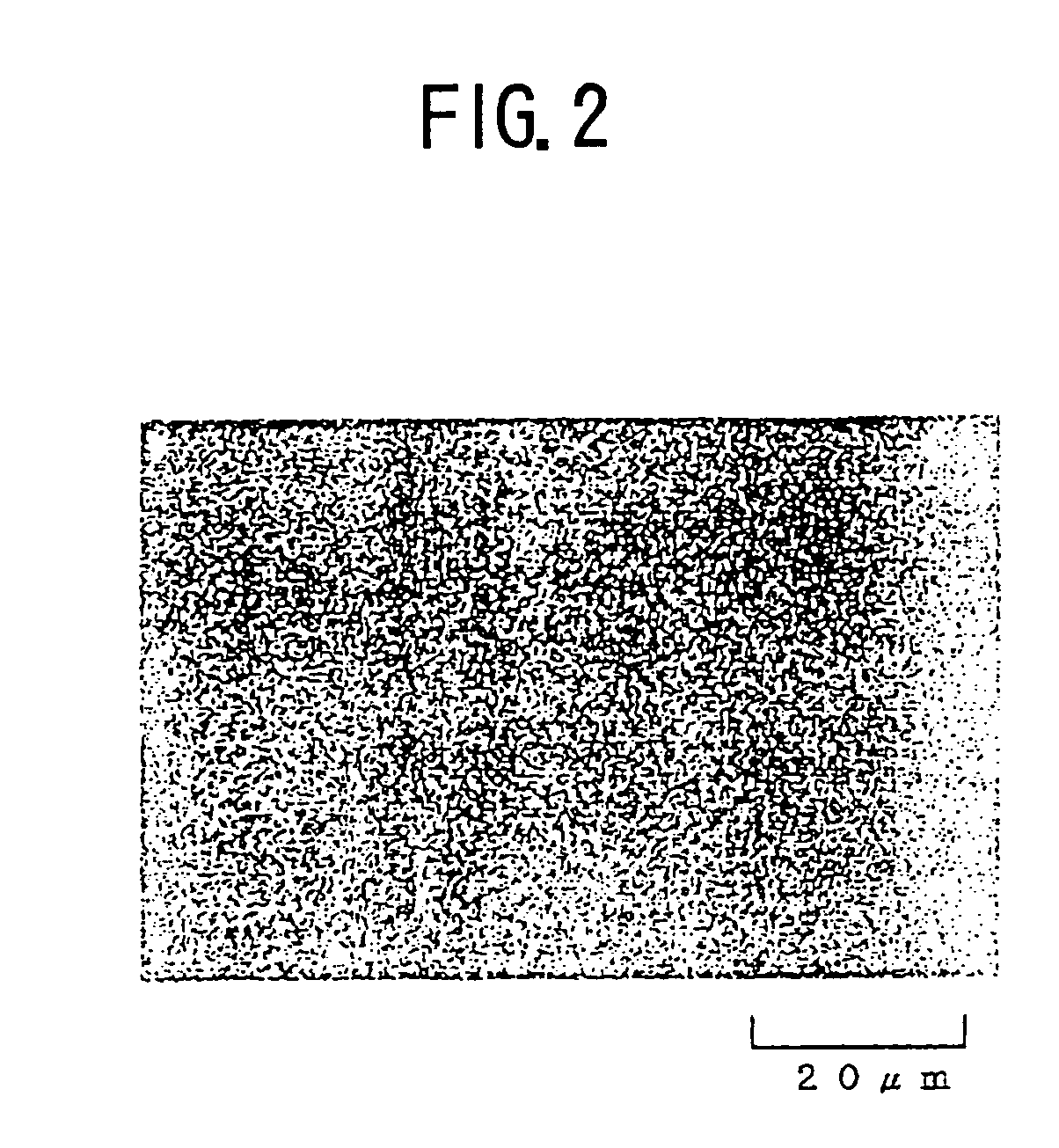Laser diode having an active layer containing N and operable in a 0.6 μm wavelength band
a laser diode and active layer technology, applied in the direction of semiconductor lasers, crystal growth process, polycrystalline material growth, etc., can solve the problems of poor temperature characteristic of the laser diode, poor confinement of carriers, especially electrons, in the active layer, etc., and achieve the effect of facilitating the iii–v compound semiconductor layer
- Summary
- Abstract
- Description
- Claims
- Application Information
AI Technical Summary
Benefits of technology
Problems solved by technology
Method used
Image
Examples
first embodiment
[0082]In a first embodiment of the present invention, a light-emitting semiconductor device having an active layer of a group III–V compound semiconductor material containing therein N and P as a group V element is fabricated. More specifically, the active layer of the first embodiment thus formed has a composition represented as Gax2In1-x2Nz2P1-z2 (0≦x2≦1, 0<z2<1).
[0083]FIGS. 1 and 2 represent the surface of an AlGaInNP layer and a GaInNP layer formed on a GaAs substrate as the active layer of the light-emitting semiconductor device by an MOCVD process.
[0084]Referring to FIGS. 1 and 2, it should be noted that each of the AlGaInNP layer and the GaInNP layer was formed with a thickness of about 1 μm, and the deposition of the active layer was made on a crystal surface of the GaAs substrate inclined in the direction from the (100) surface by an angle of 15°. The deposition was made by using TMG (tetramethyl gallium), TMA (tetramethyl aluminum), TMI (tetramethyl indium) and PH3 as res...
second embodiment
[0088]FIG. 3 shows the construction of a semiconductor layered structure 10 according to a second embodiment of the present invention.
[0089]Referring to FIG. 3, the semiconductor layered structure 10 includes an SOW (single quantum well) structure formed on a GaAs substrate 11 by an MOCVD process, wherein the SQW structure is formed on a buffer layer (not shown) of undoped GaAs formed on the GaAs substrate 11 epitaxially with a thickness of about 0.2 μm. The SQW structure, in turn, includes a barrier layer 13 of undoped AlGaInP having a composition of (Al0.5Ga0.5)0.49In0.51P, wherein the barrier layer 13 is formed on the buffer layer epitaxially with a thickness of about 0.2 μm. The barrier layer 13, in turn, is covered by an intermediate layer 14 of undoped GaInP having a composition of Ga0.65In0.35P and formed epitaxially on the barrier layer 13 with a thickness of about 1.2 nm, and an active layer 15 of undoped GaInNP having a composition of Ga0.65In035N0.008P0.992 is formed epit...
third embodiment
[0097]FIG. 5 shows the construction of a stripe laser diode 500 according to a third embodiment of the present invention based on the layered structure 10 of FIG. 3.
[0098]Referring to FIG. 5, the laser diode 500 is constructed on a substrate 501 of n-type GaAs having a principal surface inclined in the direction from the (100) surface of GaAs by an angle of about 15° and includes a buffer layer 502 of n-type GaAs formed epitaxially on the foregoing principal surface of the substrate 501, wherein the buffer layer 502 carries thereon a lower cladding layer 503 of n-type AlGaInP formed epitaxially with a composition of (Al0.7Ga0.3)0.51In0.49P, while the lower cladding layer 503 carries thereon an active layer 504 of undoped GaInNP formed also epitaxially with a composition of Ga0.51In0.49N0.01P0.99, wherein an intermediate layer 510 of GaP is interposed between the lower cladding layer 503 and the active layer 504. The intermediate layer 510 thus formed has a thickness of about 2 mole...
PUM
| Property | Measurement | Unit |
|---|---|---|
| temperature | aaaaa | aaaaa |
| wavelength band | aaaaa | aaaaa |
| optical wavelength band | aaaaa | aaaaa |
Abstract
Description
Claims
Application Information
 Login to View More
Login to View More - R&D
- Intellectual Property
- Life Sciences
- Materials
- Tech Scout
- Unparalleled Data Quality
- Higher Quality Content
- 60% Fewer Hallucinations
Browse by: Latest US Patents, China's latest patents, Technical Efficacy Thesaurus, Application Domain, Technology Topic, Popular Technical Reports.
© 2025 PatSnap. All rights reserved.Legal|Privacy policy|Modern Slavery Act Transparency Statement|Sitemap|About US| Contact US: help@patsnap.com



